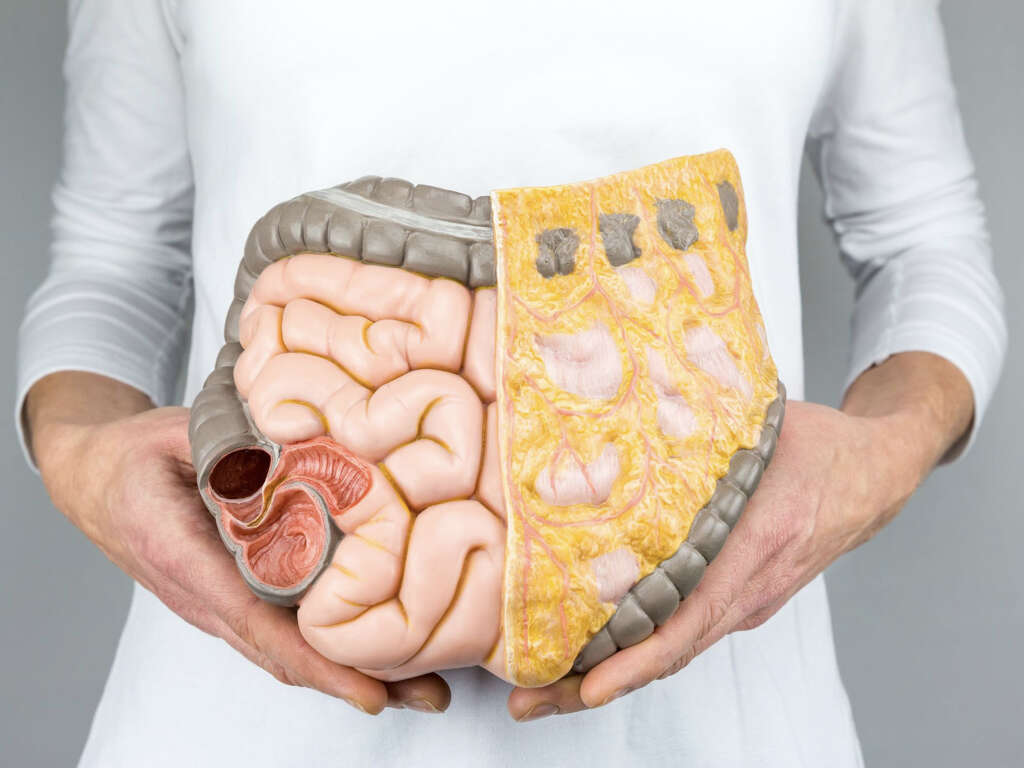10 Symptoms of Gastroenteritis
Gastroenteritis, more commonly referred to as stomach flu or sometimes simply flu, is a fairly common viral infection that attacks the intestines of the human body. It is known for causing a number of symptoms that most of us are familiar with, such as nausea, vomiting, and a fever.
There are several ways in which one could contract stomach flu. The most common way is being in contact with someone else who is infected or eating something that is carrying the virus. In most cases, people are able to fight off stomach flu without any long-lasting side effects. Unfortunately, young children and elderly patients, as well as people struggling with immune problems, may find that stomach flu can be deadly. Since there are no known acute cures for gastroenteritis, the most important thing that you can do is prevent yourself from contracting it. This means that it’s important to be careful about where you source your food, and to wash all your fruits and vegetables before eating them. It’s also important to make sure that you wash your hands frequently.
If you are wondering whether you’re struggling with stomach flu, it can be helpful to read a list of symptoms to see if they fit what you’re experiencing. That’s why we’ve compiled the ten most common problems associated with gastroenteritis. If you’re experiencing a number of these symptoms, then it could be wise to take some rest and wait for the illness to pass.
Symptom #1: Watery Stool
One of the most common symptoms of gastroenteritis is watery stools, also referred to as diarrhea. When you’re struggling with stomach flu, it’s quite common to experience frequent, watery bowel movements.
It’s important to note that the diarrhea caused by gastroenteritis is not often bloody. If you are experiencing bloody stools, then chances are that you are struggling with another form of infection or ailment. This is also an indication that whatever you’re struggling with is more serious than simple stomach flu and that you should seek medical help.
Symptom #2: Abdominal Cramps
Many people who are struggling with gastroenteritis report a high frequency of abdominal cramping. These cramps can vary in intensity, ranging from mild and infrequent to severe and quite frequent. These cramps usually disappear by the time that the illness has abated.
Cramps can be more severe after eating or drinking. They also come alongside other symptoms such as nausea and intestinal discomfort.

Symptom #3: Nausea
Nausea is a sensation that most of us are familiar with. It is a queasy sort of feeling that arises in the pit of the stomach and can emerge from things like motion sickness, high levels of stress, and illnesses. Strangely enough, however, most of us are familiar with nausea because of our first early experiences with stomach flu.
Nausea is generally the feeling that precedes vomiting. However, if the infection is not too severe, nausea may be present without actually leading to vomiting. Anti-emetic medications can help to reduce the severity and discomfort of nausea.
Symptom #4: Muscle Aches
While it’s not the most common symptom of flu, many people report experiencing muscle aches and soreness. In fact, muscle aches are one of the symptoms that can distinguish stomach flu from other forms of similar illness.
The muscles of the body tend to become sore and ache when you try to move them. This can significantly impede your ability to perform your day-to-day functions. This is different and more intense than simple muscle fatigue that occurs during other illnesses.

Symptom #5: Vomiting
Vomiting is a response that the body produces when it is attempting to clear something out of it. Vomiting can occur in response to ingesting toxins or large amounts of drugs, or in the case of stomach flu, when the body detects a pathogen within that it needs to expel.
Vomiting can occur during the early stages of the illness and affect a patient until the virus has run its course. Nausea usually precedes vomiting and can be an indication that you need to get a container to vomit in.
Symptom #6: Headaches
Serious flu can be quite debilitating. Not only can it cause nausea and muscle soreness, but flu can cause headaches. Headaches can range in their intensity and can be quite mild or very severe.
Typical NSAID medications can be useful for helping to ward off a headache, but, unfortunately, they might not sit well with the nausea.

Symptom #7: Fever
A fever is the body’s natural response when it detects a virus or pathogen that needs to be eliminated. Many viruses and bacteria don’t survive as well in higher temperatures, so by raising the temperature of the body, the immune system makes it easier to tackle and destroy the virus.
The fever caused by flu generally doesn’t reach any more than 104 degrees Fahrenheit. If you experience anything higher than that then you should see a doctor right away.
Symptom #8: Dehydration
It’s important to drink a lot of fluids when you’re suffering from flu, otherwise you might become quite dehydrated.
It might not seem like the most pleasant idea to drink a lot of water when you’re sick—especially if you’re having a hard time keeping things down. However, the water that you’re expelling either by vomiting or frequently going to the bathroom needs to be replenished or other symptoms can emerge.

Symptom #9: Lethargy and Fatigue
Regardless of what the ailment that you’re struggling with is, it’s common for the body to become tired and fatigued when it is dedicated to the elimination of foreign bodies and pathogens. This is why people struggling with flu are often bedridden due to their fatigue and lethargy.
In this case, it’s usually best to try and rest up instead of forcing yourself to be active. The more rest you get, the faster your body can eliminate the illness.
Symptom #10: Nutritional Problems
It’s quite common for people struggling with flu to develop certain nutritional imbalances. This is because they have a hard time keeping food down, often vomiting up what they do eat, and because their digestive tract is often too sensitive to properly absorb the nutrients from food.
A good way to work around this is to eat easy-to-digest food. Blend your meals and drink fruit smoothies to help prevent nutritional imbalances. Baby food is another alternative, although blending your own food is essentially making your own homemade baby food.











